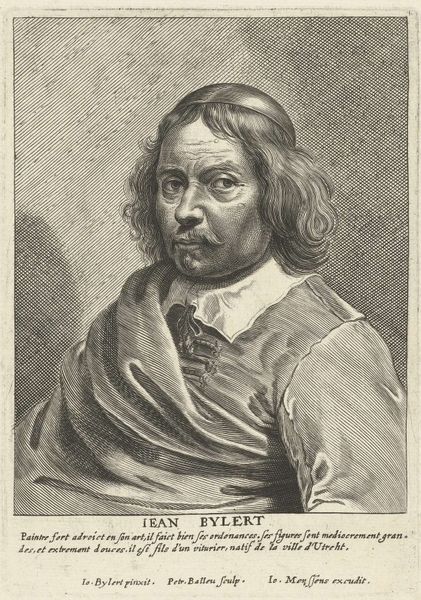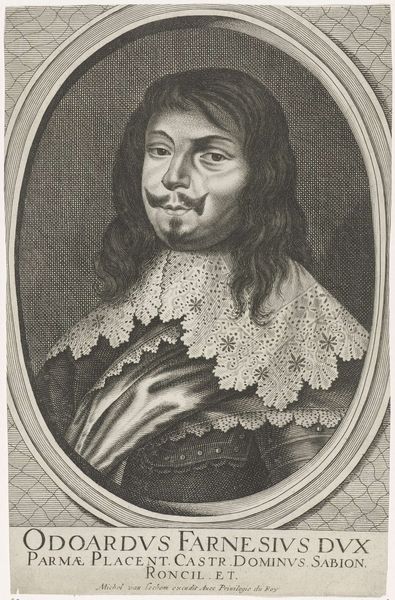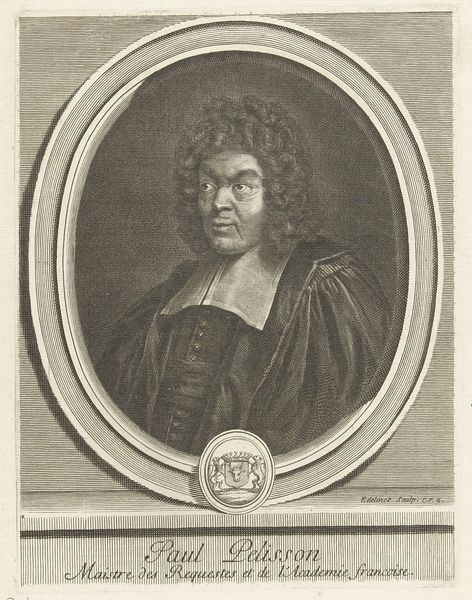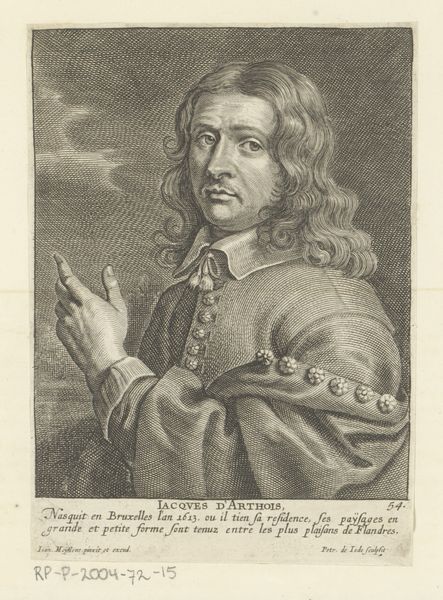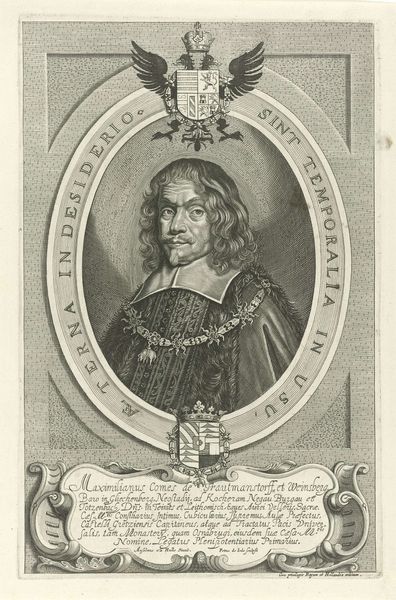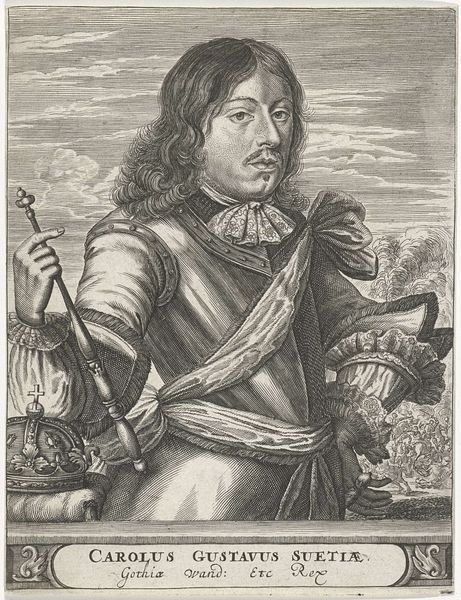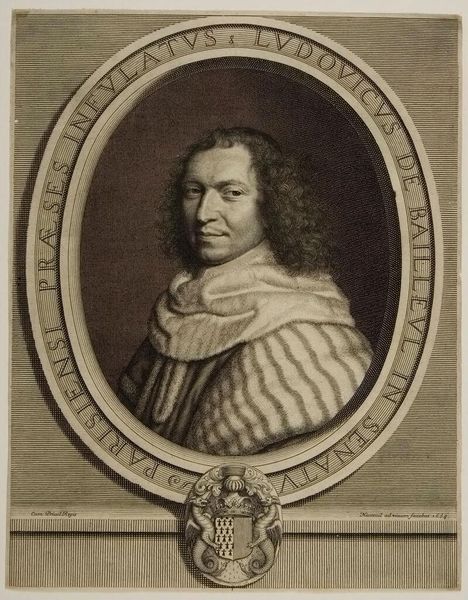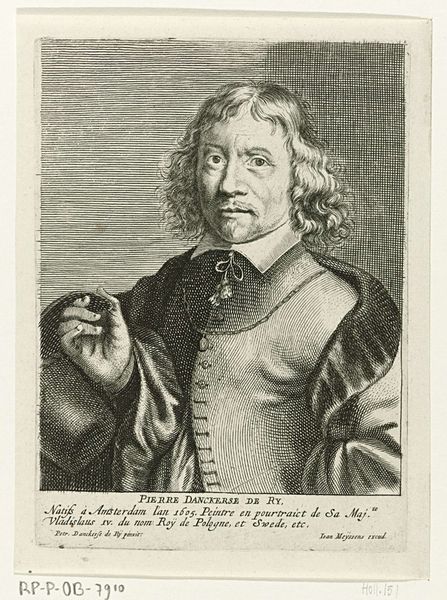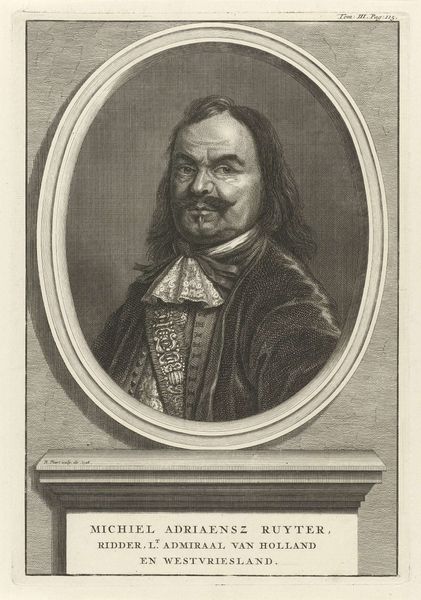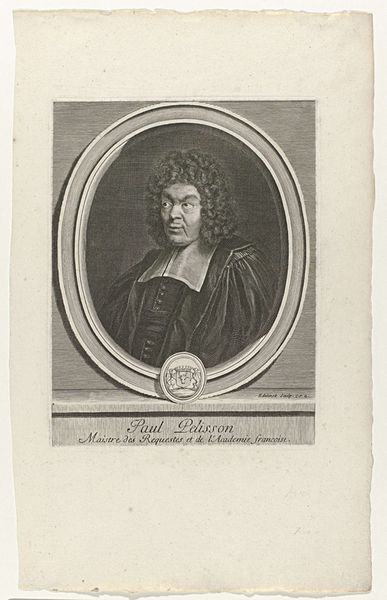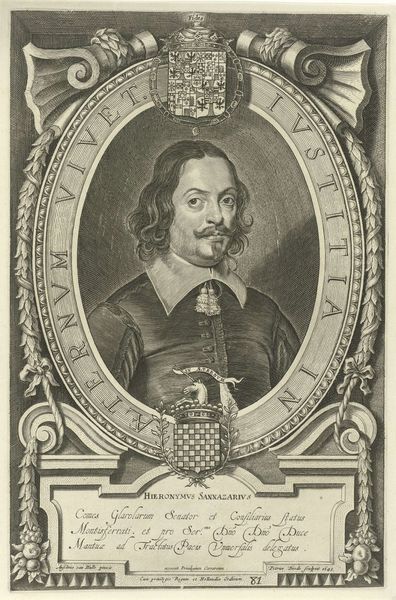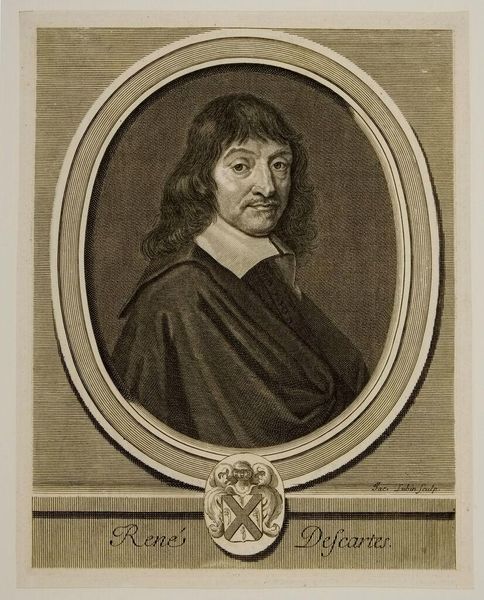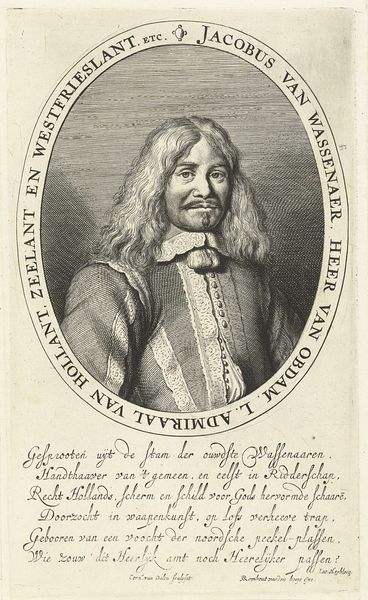
engraving
#
portrait
#
baroque
#
caricature
#
line
#
portrait drawing
#
engraving
Dimensions: height 136 mm, width 83 mm
Copyright: Rijks Museum: Open Domain
Curator: Here we have a striking engraving from around the late 17th century: Hendrik Causé's portrait of Aernout van Overbeke. Editor: My first impression? The subject has an...unusual visage. Almost verging on caricature. There is a strong element of almost grotesque, if you will, exaggeration, especially in the nose and forehead. Curator: It's tempting to focus on physical appearance. But think about the Dutch Republic at the time. Power dynamics, social standing, were visualized through dress, posture, and of course, portraiture. Aernout van Overbeke, who was a lawyer and jurist at the High Court of The Hague, was certainly conscious of his status, reflected in the intricate lace and the flowing wig, even in engraving. Editor: Precisely. The line work is fascinating; it’s a marvel of detail using only the most minimal means. Notice how the hatching defines not only form but also the textures of cloth, skin, and hair. The formal, baroque elements—the framing wreath, the inscription—contribute to an interesting tension with the figure’s slightly unconventional features. It's about order and perceived disfigurement. Curator: That contrast could reflect broader tensions of the era—the Enlightenment beginning to challenge traditional hierarchies, the rise of individuality questioning social norms. I wonder what Overbeke's social circles thought about this. Was he a controversial figure? How did this portrayal reinforce or subvert those perceptions? This engraves reflects how someone of power and status perceived or even wanted to perceived by other within the given intersection of gender and race. Editor: A provocative question. Yet even if we set aside the historical narratives, consider how skillfully the engraver manipulated light and shadow to create volume and depth. The gaze of Overbeke is arresting, almost confrontational, with that minimal yet captivating employment of line work. Curator: The engraving really captures the intersection between artistic interpretation and individual identity. And what those portrait could mean within Overbeke's historical moment in relation to broader historical events and circumstances. Editor: For me, the work speaks volumes about the power of formal artistic elements to influence perception and meaning within structural components of its visual make-up, transcending historical context, yet equally enriching it.
Comments
No comments
Be the first to comment and join the conversation on the ultimate creative platform.
